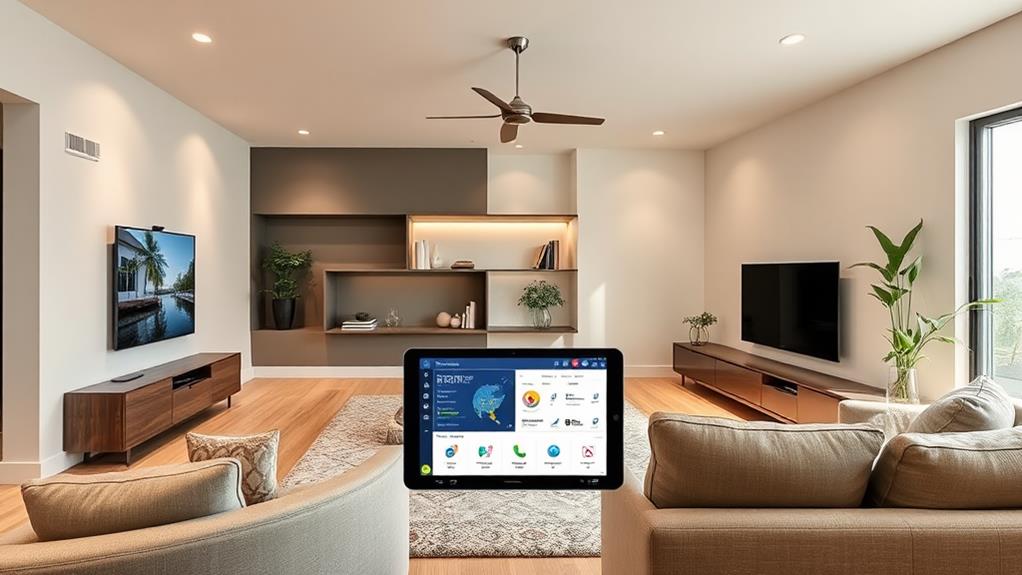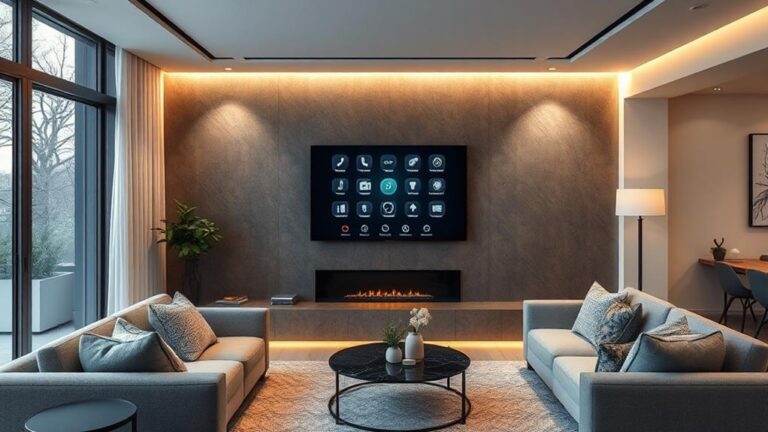Home security systems are evolving with new technologies to enhance safety, convenience, and efficiency. Smart technology integration allows you to control security setups via your smartphone, connecting devices like smart locks and motion sensors to a centralized platform.
AI-powered surveillance improves threat detection by analyzing real-time data and distinguishing between humans, animals, and vehicles, minimizing false alerts. The Internet of Things (IoT) enables communication among home devices, with sensors alerting you to open doors or windows automatically.
Real-time monitoring with remote access and personalized notifications tailors security responses. Explore these advancements for more insights.
Main Points
- Enhanced AI analyzes real-time data, reducing false alerts and improving threat detection accuracy.
- IoT connectivity allows seamless communication and centralized control of all smart security devices via a single app.
- Personalized notifications provide tailored updates, minimizing irrelevant alerts and focusing on critical security events.
- Smart lighting and automation simulate occupancy to deter intruders and enhance overall security efficiency.
- Facial recognition and advanced sensors distinguish between familiar faces and potential intruders.
Smart Technology Integration
Smart technology integration is revolutionizing home security systems by making them more efficient and user-friendly. You can now control many aspects of your security setup with just a smartphone or tablet. This convenience stems from connected devices, like smart locks and motion sensors, which communicate seamlessly over wireless networks.
These systems allow you to lock doors remotely or receive instant alerts if any unusual activity is detected. Additionally, home automation platforms integrate with security devices, providing a centralized management hub.
Smart home security products, available through various platforms, are designed to meet the homeowner’s evolving needs by offering advanced features and easy integration.
The use of smart lighting, for instance, can deter potential intruders by creating the illusion of occupancy when you’re away. As a result, smart technology not only enhances security but also adds a layer of convenience to your daily life.
AI-Powered Surveillance
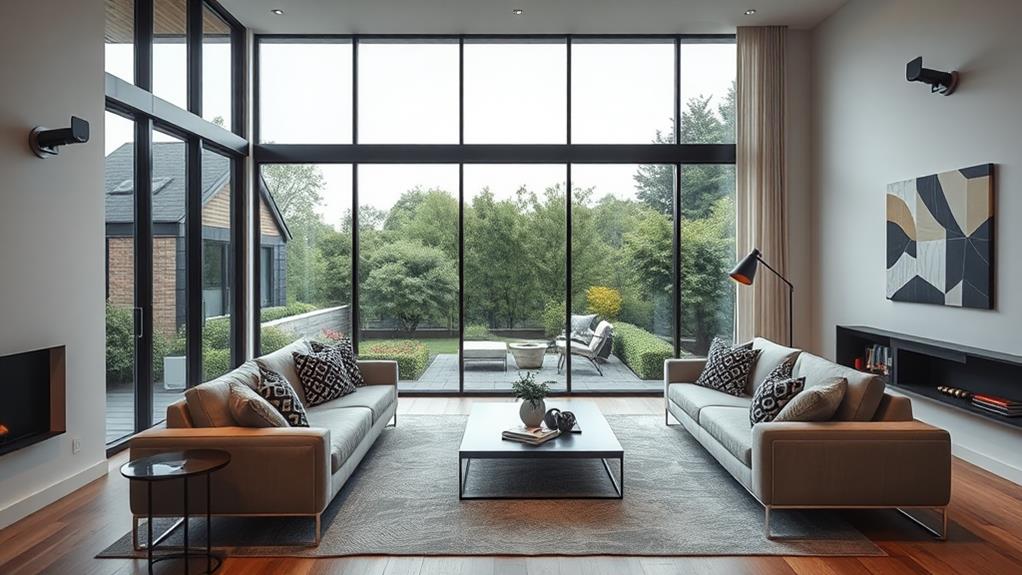
Artificial intelligence is transforming the landscape of home security through AI-powered surveillance systems. These advanced systems enhance your security by analyzing data in real-time, identifying potential threats, and providing actionable alerts.
AI-powered cameras can distinguish between humans, animals, and vehicles, minimizing false alarms and ensuring you’re notified only when necessary.
With AI motion detection, these cameras can notably reduce false alerts by differentiating between objects, which enhances the reliability of the notifications you receive.
Additionally, AI systems are compatible with smart home ecosystems, allowing seamless integration with devices like Alexa and Google Assistant for a more all-encompassing security experience. Here’s how AI-powered surveillance benefits you:
- 24/7 Monitoring: AI systems tirelessly analyze video feeds, ensuring constant vigilance even when you’re asleep or away.
- Face Recognition: This feature identifies known individuals, granting access or alerting you to unknown visitors.
- Behavior Analysis: AI detects unusual activities, such as loitering or movement in restricted areas, and alerts you immediately.
- Data Storage: AI systems efficiently manage video storage, retaining only relevant footage, saving space, and simplifying retrieval.
IoT Connectivity

Integrating seamlessly into modern homes, IoT connectivity in security systems brings unprecedented control and convenience. With IoT, or the Internet of Things, devices in your home can communicate with each other and with you.
For those looking to transform their space with smart home solutions, your security system can connect to smart locks, lights, and cameras, allowing you to manage them all through a single interface, often via a smartphone app. This interconnectedness enhances your ability to customize, automate, and optimize your home’s security.
For example, sensors can alert you to an open door or window, while smart cameras capture footage, all without manual intervention. You can even set schedules for locking doors or turning on lights, enhancing safety while you’re away. IoT transforms traditional security systems into intelligent networks.
Real-Time Monitoring
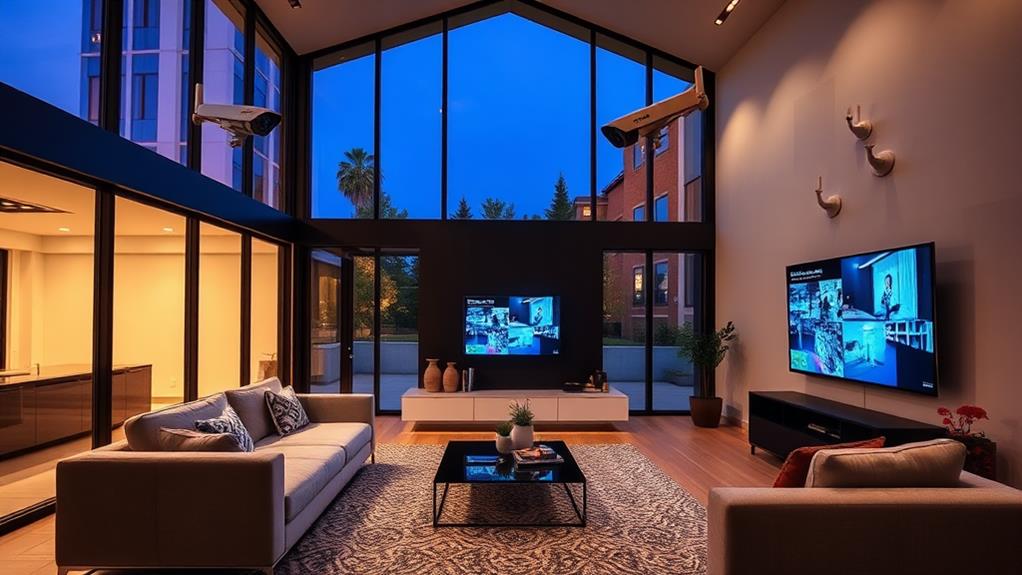
Real-time monitoring serves as the vigilant guardian of your home security system. It guarantees you’re always aware of what’s happening within your home, providing constant surveillance and immediate alerts.
This technology uses cameras, motion detectors, and sensors to track activity 24/7. Many systems now offer AI-powered detection, which minimizes false alerts by distinguishing between humans, vehicles, and other objects. You can watch live feeds from your smartphone or computer, offering peace of mind wherever you are.
Here’s why real-time monitoring is essential:
- Immediate Response: The system alerts you the moment it detects unusual activity, allowing for a swift reaction.
- Remote Access: You can monitor your home from anywhere, assuring you’re always in control.
- Data Storage: It records footage, so you have evidence if needed.
- Integration: Seamlessly connects with other smart devices for enhanced security.
Personalized Notifications
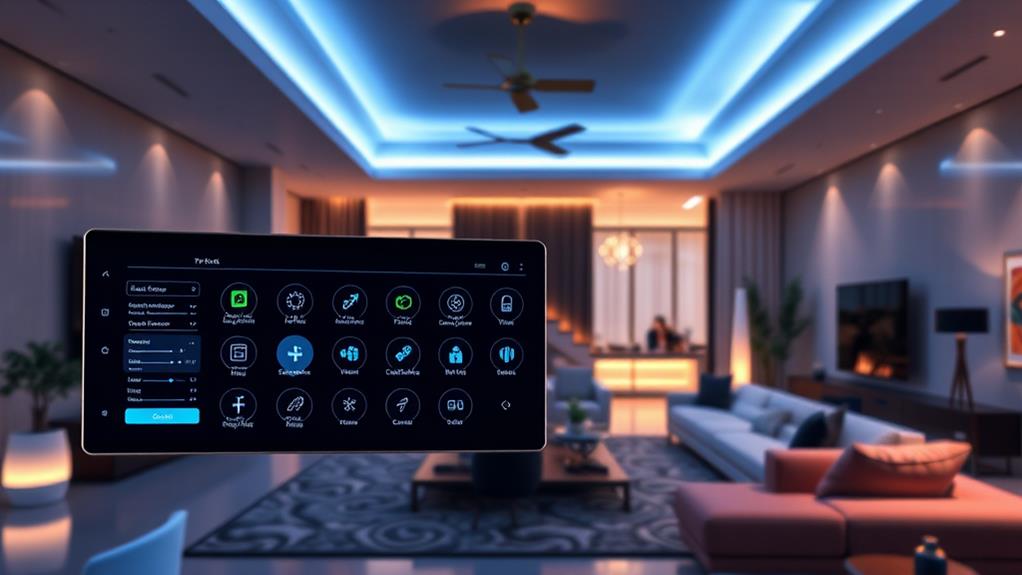
With personalized notifications, you’re not just receiving generic alerts; you’re getting tailored updates that matter most to you. Home security systems now use advanced algorithms and machine learning to analyze your daily routines and preferences.
These technologies adjust notifications based on your specific needs. For example, if you usually arrive home at a certain time, your system can alert you only when unusual activity occurs outside those hours.
You can customize alerts to focus on areas of concern, like the front door or backyard. This targeted approach minimizes unnecessary notifications, ensuring you focus only on critical updates. By fine-tuning your system, you maintain a higher level of security, while reducing the overwhelming influx of irrelevant alerts.
Seamless Device Integration

While personalized notifications enhance your security experience by focusing on what truly matters, seamless device integration takes it one step further by creating a cohesive ecosystem within your home.
Integrating your security systems with other smart devices will enhance your control and improve efficiency by allowing your devices to communicate, guaranteeing a synchronized response to any event.
For instance, you can integrate smart home platforms like Alexa with your security system for voice commands and live streaming. Additionally, high-resolution cameras with night vision guarantee you never miss a detail, even in low-light conditions. Here are some key benefits:
- Centralized Control: Manage all your devices through a single app or interface, making it easier to monitor and adjust settings.
- Automated Routines: Trigger actions based on specific events, like turning on lights when motion is detected.
- Enhanced Compatibility: Integrate various brands and devices, increasing flexibility in your security setup.
- Energy Efficiency: Optimize device usage, saving energy and reducing costs.
Enhanced Threat Detection
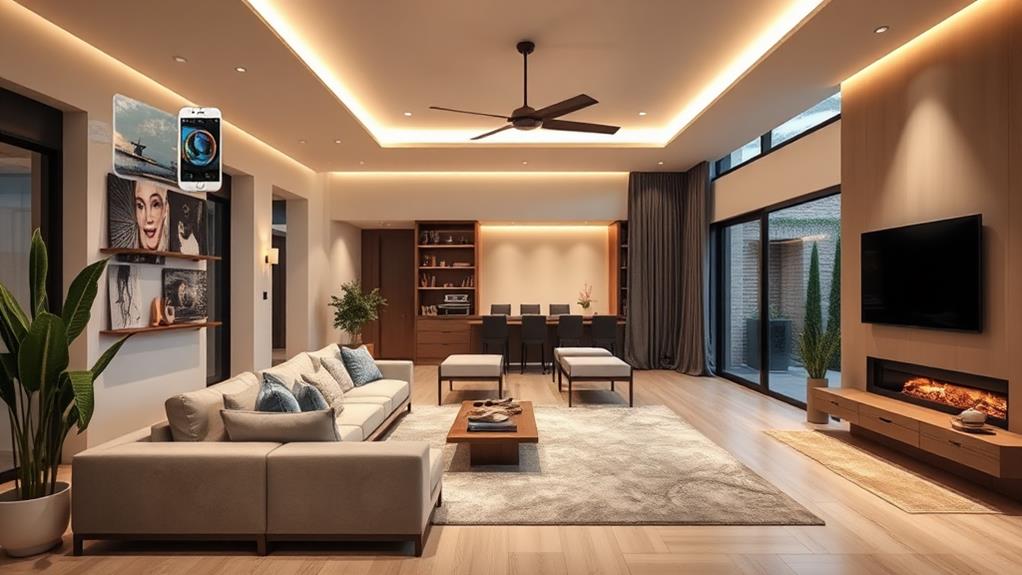
Advanced technologies are transforming threat detection in home security systems, making them more reliable and responsive than ever. These systems now feature artificial intelligence (AI) and machine learning, allowing them to analyze patterns and identify unusual behavior.
You’ll find that cameras equipped with facial recognition can distinguish between familiar faces and potential intruders. Motion sensors have become more sophisticated, capable of filtering out false alarms from pets or weather changes.
Additionally, many systems now incorporate Internet of Things (IoT) devices, connecting everything from door locks to lighting, enhancing communication between components.
This interconnectedness guarantees that when a threat is detected you’re notified immediately, and appropriate actions are taken. Overall, these advancements provide an extensive, proactive approach to home security.
Frequently Asked Questions
How Do Modern Home Security Systems Protect Privacy and Prevent Data Breaches?
Modern home security systems protect your privacy by using encryption, which scrambles data so only authorized users can access it. They often have two-factor authentication, requiring you to verify your identity in two ways, like a password and a phone code. To prevent data breaches, these systems frequently update their software, patch vulnerabilities, and employ secure cloud storage. They also monitor for suspicious activity, alerting you to potential threats immediately.
Are There Any Eco-Friendly Options for Home Security Systems?
When considering eco-friendly home security systems, you’ll find options that minimize energy use. Look for solar-powered cameras, which harness sunlight to operate, and smart systems that optimize electricity use by activating only when needed. Some brands offer devices made from recycled materials, reducing environmental impact. Energy-efficient LEDs in security lighting also help lower energy consumption. These innovations guarantee you maintain security while supporting sustainability, providing an environmentally conscious choice for your home.
What Are the Costs Associated With Installing and Maintaining New Security Systems?
When installing a new security system, you’ll typically face initial expenses like equipment costs, which can range from $200 to $1,500, depending on the system’s complexity. Professional installation might add $100 to $500. Monthly monitoring fees, a common feature, usually cost between $10 and $60. Maintenance expenses, such as battery replacements or software updates, should also be considered, though they’re generally minimal. Understanding these costs helps you budget effectively.
How Do Updated Security Systems Handle Power Outages or Internet Disruptions?
Updated security systems handle power outages by using battery backups, guaranteeing your system stays active even when electricity is down. These backups can last for several hours, depending on the model. For internet disruptions, systems often switch to cellular networks, allowing continuous monitoring and alerts. This dual-path communication guarantees you receive notifications and your security provider remains informed. Both features enhance reliability, giving you peace of mind during unexpected disruptions.
Can Advanced Security Systems Integrate With Existing Legacy Security Equipment?
Yes, advanced security systems can integrate with your existing legacy security equipment. This means you won’t need to replace everything you already have. Many modern systems support backward compatibility, allowing new devices to work with older technologies. They often use protocols like Z-Wave or Zigbee, which enable communication between different devices. You can enhance your security setup by adding smart features, such as remote monitoring and automation, without discarding your current equipment.

